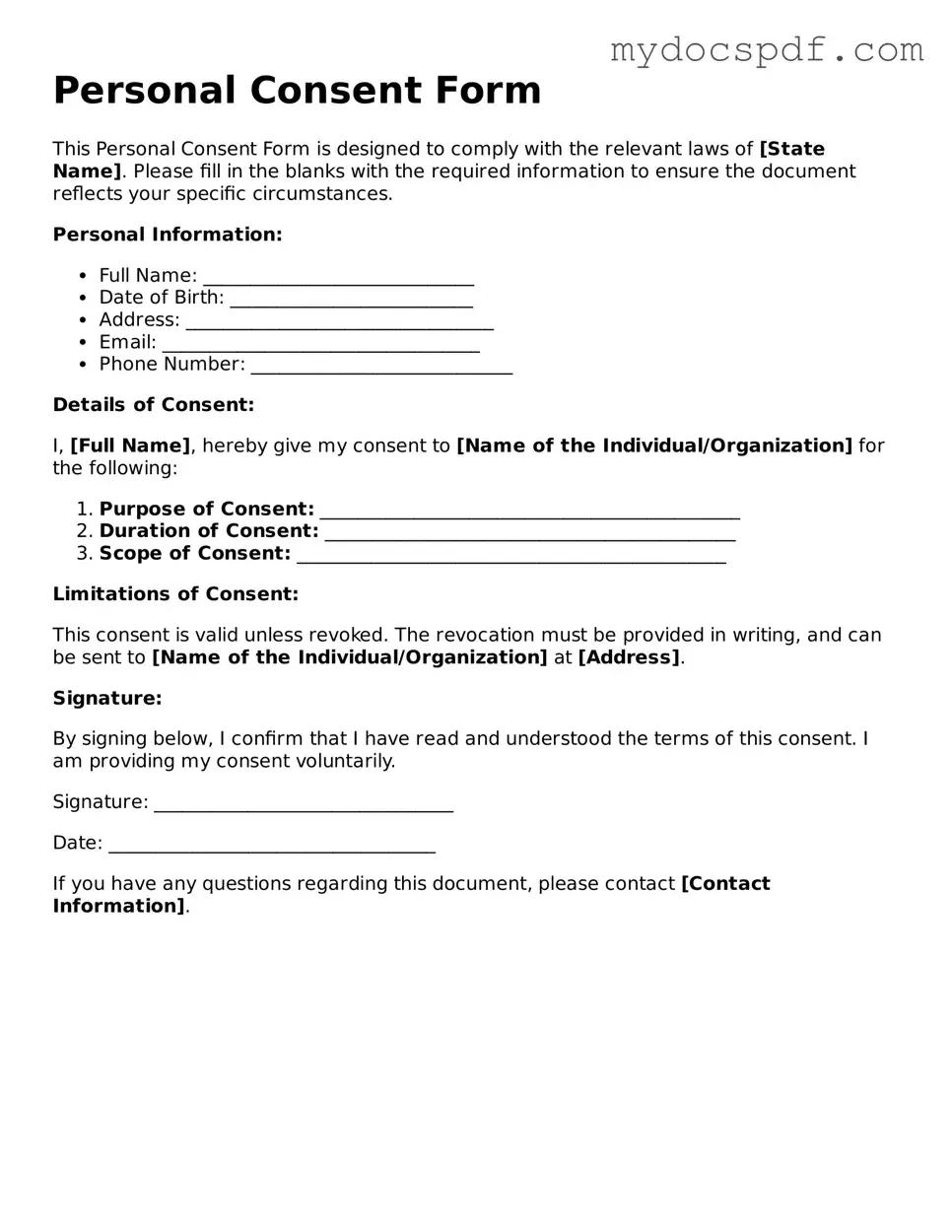Personal Consent Form
This Personal Consent Form is designed to comply with the relevant laws of [State Name]. Please fill in the blanks with the required information to ensure the document reflects your specific circumstances.
Personal Information:
- Full Name: _____________________________
- Date of Birth: __________________________
- Address: _________________________________
- Email: __________________________________
- Phone Number: ____________________________
Details of Consent:
I, [Full Name], hereby give my consent to [Name of the Individual/Organization] for the following:
- Purpose of Consent: _____________________________________________
- Duration of Consent: ____________________________________________
- Scope of Consent: ______________________________________________
Limitations of Consent:
This consent is valid unless revoked. The revocation must be provided in writing, and can be sent to [Name of the Individual/Organization] at [Address].
Signature:
By signing below, I confirm that I have read and understood the terms of this consent. I am providing my consent voluntarily.
Signature: ________________________________
Date: ___________________________________
If you have any questions regarding this document, please contact [Contact Information].
